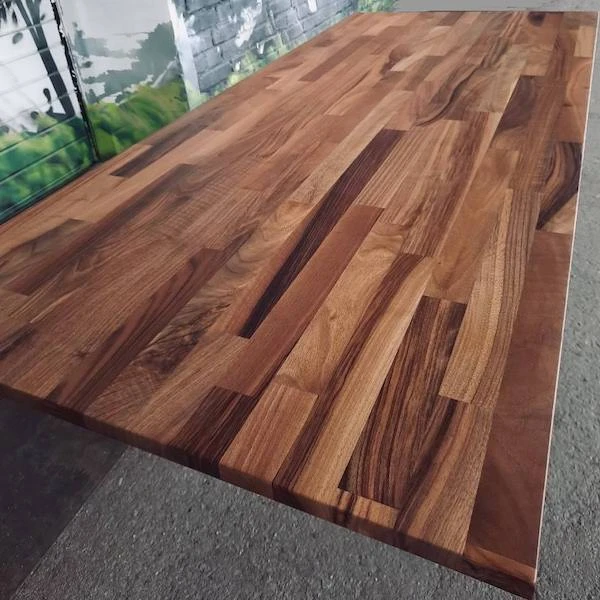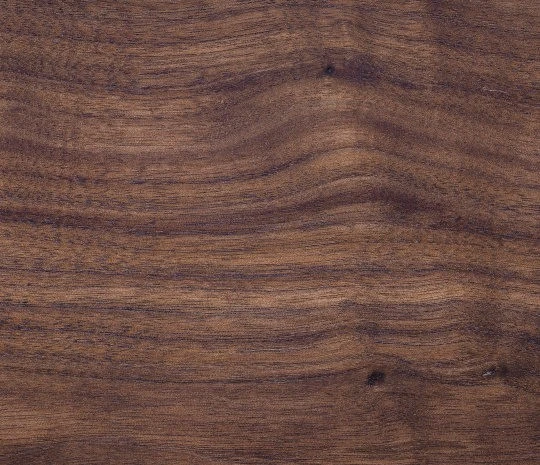Walnut wood is a material for high-end furniture and interior elements.
The walnut family comprises more than 60 species. Yet, when it comes to furniture, woodworkers tend to use only two varieties, namely, European and American walnut (black walnut). Both species are common in Estonia (can be found in stores).
The differences between European and American walnut
The major difference between the two walnut varieties is their texture. European walnut is varied. The color and texture of European walnut depends on the soil, climate, and tree diameter. The resulting material is often two-color, black and white, and contrasting. There are also exclusively dark specimens. The color is closer to violet, shimmering in the sun.

European walnut tabletop
The typical features of the nut texture are large sinuous stripes with alternating shades, dark dots and dashes evenly spaced along the annual rings.
The American walnut has a darker, more uniform texture than the European walnut. When we imagine a deep-dark, black walnut, it is an American walnut. Other differences include hardness; American walnut is 5-10% softer than European walnut. The American walnut wood is elastic, so it does not tend to warp and crack like other exotic species.
Walnut – an affordable exotic
Both types of walnut have a pleasant smell. Walnut wood is hard and perfectly suitsfor furniture and stairs.
Walnut has one of the most beautiful and varied textures among the woods in our region. The selection of walnut is much wider than other uncommon dark species, and the price of walnut is lower. For example, the walnut cost is 1.5 times lower than the wenge price (African dark wood).
Therefore, we can call walnut an affordable exotic.


